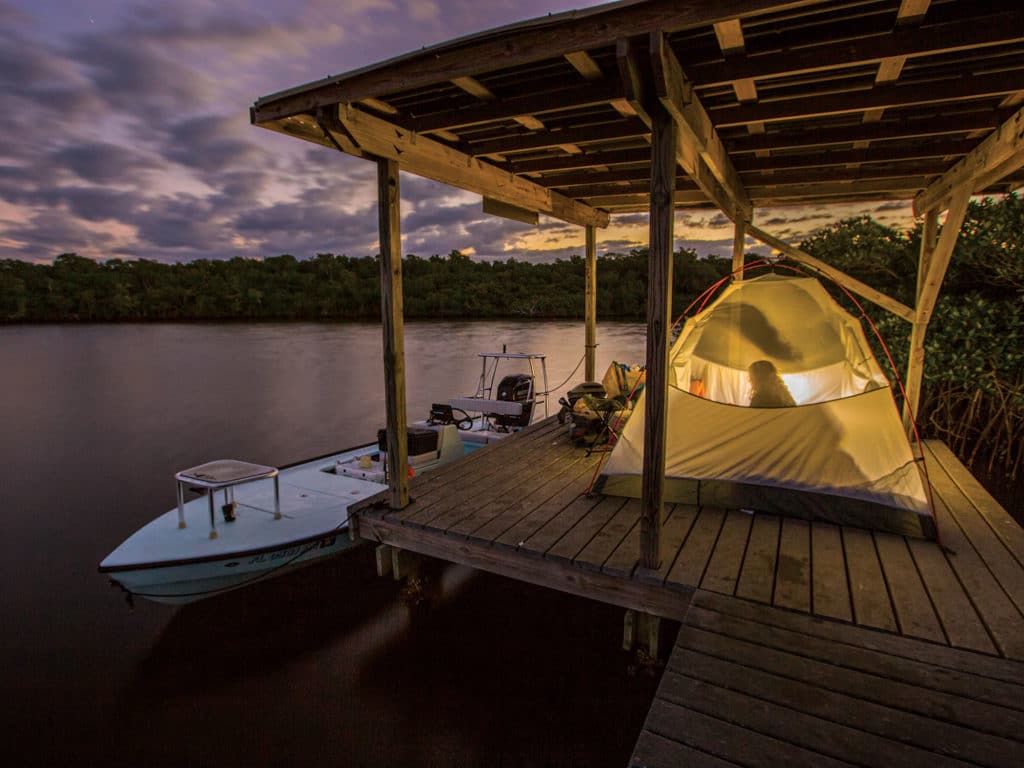
Rounding the point in Gaskin Bay, I carefully brought the skiff off plane and headed toward a white-sand beach on the mangrove island ahead. Our Glades camping adventure was just beginning.
“There it is: Tiger Key, our home for the next three days. Looks like we have it all to ourselves so far,” I told my fishing partner and close friend, John Dunphy. “Do you want to set up first?”
“No, let’s just unload, make some sandwiches for later and go fishing,” Dunphy answered. “We’ll have time to pitch the tent this afternoon. Let’s take advantage of this tide now.”
Dunphy and I had driven down from the Florida Panhandle the previous day. After spending the night at the historic Rod and Gun Club in Everglades City and getting our camping permit at the Everglades National Park Visitor Center nearby, we launched and eased out the Barron River and through Indian Key Pass to our destination.
A few years earlier, we’d taken a similar trip but departed from Flamingo, staying on chickees (covered platforms built over the water) in Whitewater Bay. This time, we’d camp on Tiger Key, a small island near the park’s northern border, in the Ten Thousand Islands.
Natural Marvel
Established in 1947, Everglades National Park is the largest tropical wilderness in the United States and the largest mangrove ecosystem in the Western Hemisphere. It is an International Biosphere Reserve and UNESCO World Heritage site. More importantly to anglers, it is prime habitat for 220 species of fish and crustaceans.
Day trips from Flamingo, Everglades City, Chokoloskee, the Keys and Marco Island are popular, but camping lets you truly appreciate the park’s expanse and beauty. Winter, when temperatures, mosquitoes, no-see-ums and flies aren’t as taxing, is the best time to go.
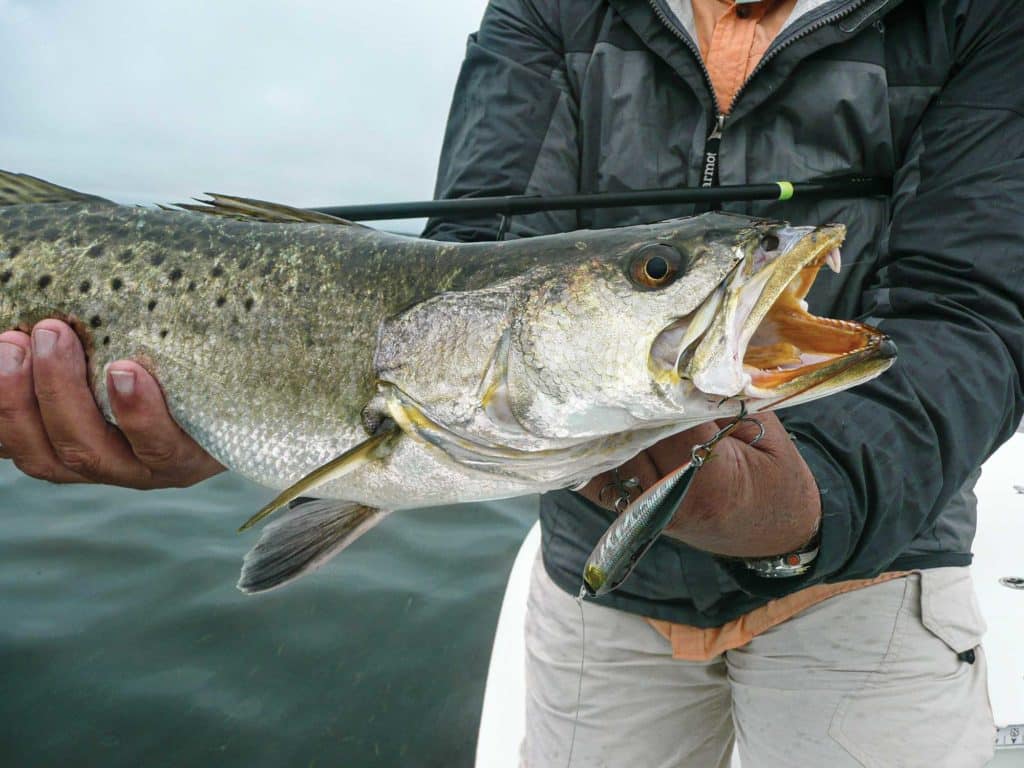
Campsite Options
In addition to drive-up and RV sites at Flamingo, campsite options include the chickees, numerous designated beaches and ground sites along some of the coastal rivers. Chickees can only be reserved for one night at a time to allow access to kayakers and canoers who paddle the Wilderness Waterway trail. Depending on availability, beach sites can be booked for multiple nights. Campfires are only allowed at beach sites below the high-tide line.
David Stoots, who lives in the Fort Lauderdale area, camps in the park several times each winter and spring.
“I’ve done both the beaches and chickees for a couple of days each time, mainly from November to April,” he says. “The chickees are cleaner, and I’ve heard the ground sites tend to be buggier, depending on the wind direction.”
Packing Advice
I take the usual camping gear, extra trash bags to pack our waste back out, and a solar shower bag, which affords a refreshing rinse after a long day on the water when hung from the chickee or a nearby tree. For beach anchoring, an extra anchor with a bungee to pull the boat ashore comes in handy.
Since stakes or nails aren’t allowed on the chickees, Stoots carries rope to secure the tent (zip ties and bungees work too).
“I like to stick a Thermacell repeller in a chair cup holder to keep the mosquitoes at bay,” he adds. “And always make sure the tent zippers work. I also keep a really good first-aid kit aboard the boat and carry a Garmin inReach Mini satellite communicator because cell coverage is almost -nonexistent in the backcountry.”
For tackle, Stoots brings his usual complement of light spinning and fly gear, adding some extra jig heads, leader, and soft-plastics rigged weedless to skip under the mangroves. D.O.A. TerrorEyz lures are effective for baby tarpon, while Bait Busters entice the big ones. He also carries a heavier outfit for soaking baits to have fun with the big sharks cruising the cuts and rivers at night, and MirrOlure Catch 2000 plugs for laid-up snook in the spring.
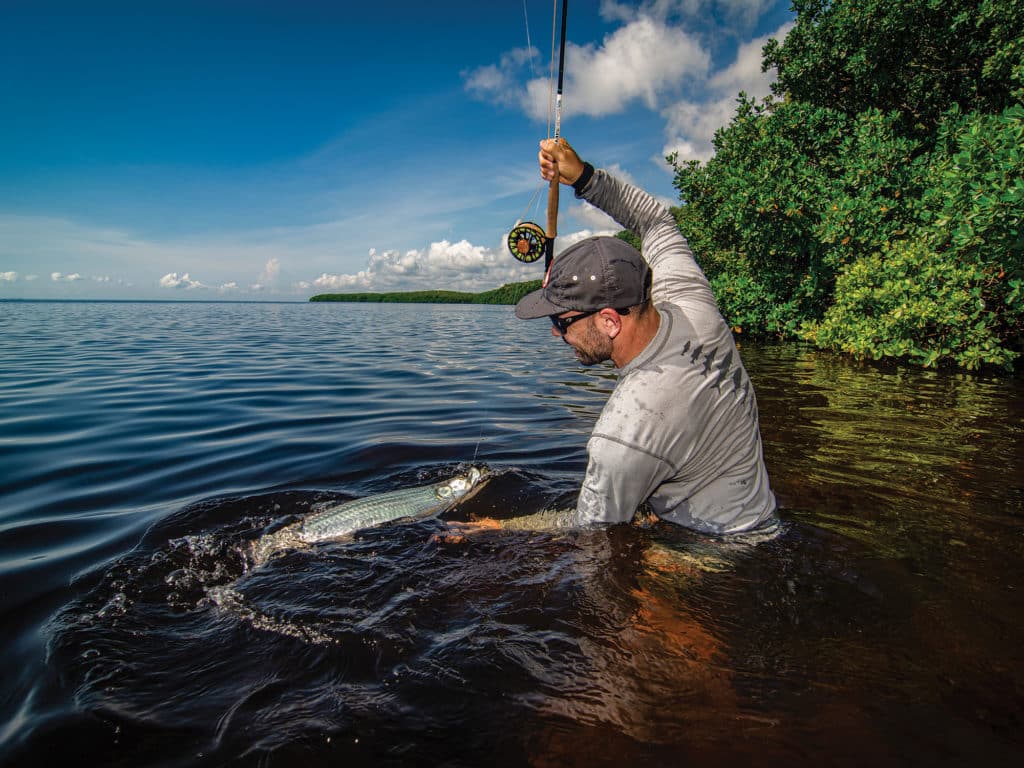
Voice of Experience
“Water temperature and wind direction determine winter and early-spring success in the backcountry,” says Capt. Bob Lemay, who has specialized in Everglades light-tackle charters for three decades. “In the interior, wind is often stronger than the tide, and it’ll also cool the water. A degree of warmth or even half can make all the difference.”
Lemay says winter falling tides often go lower than predicted, and west winds can drive in more water on incoming tides, so those variables should be considered. Small mangrove islands often block the main tidal flow and create secondary currents, and fish typically collect on their down-current ends.
“Snook and tarpon are temperature-sensitive. Shallow water cools off quicker as the sun goes down, so fish go to deeper water during cold fronts,” he adds. “By midmorning, though, sheltered, shallow spots with mud bottom warm fast, drawing the fish back.”
Lemay suggests focusing on spots where feeder creeks empty into rivers. Backcountry rivers average 8 to 14 feet in depth and have mostly hard limestone bottoms. To fish them, he recommends going with the current and tide whenever possible. Big sharks push up the rivers against the current, so gamefish are sensitive to pressure waves opposing the flow.
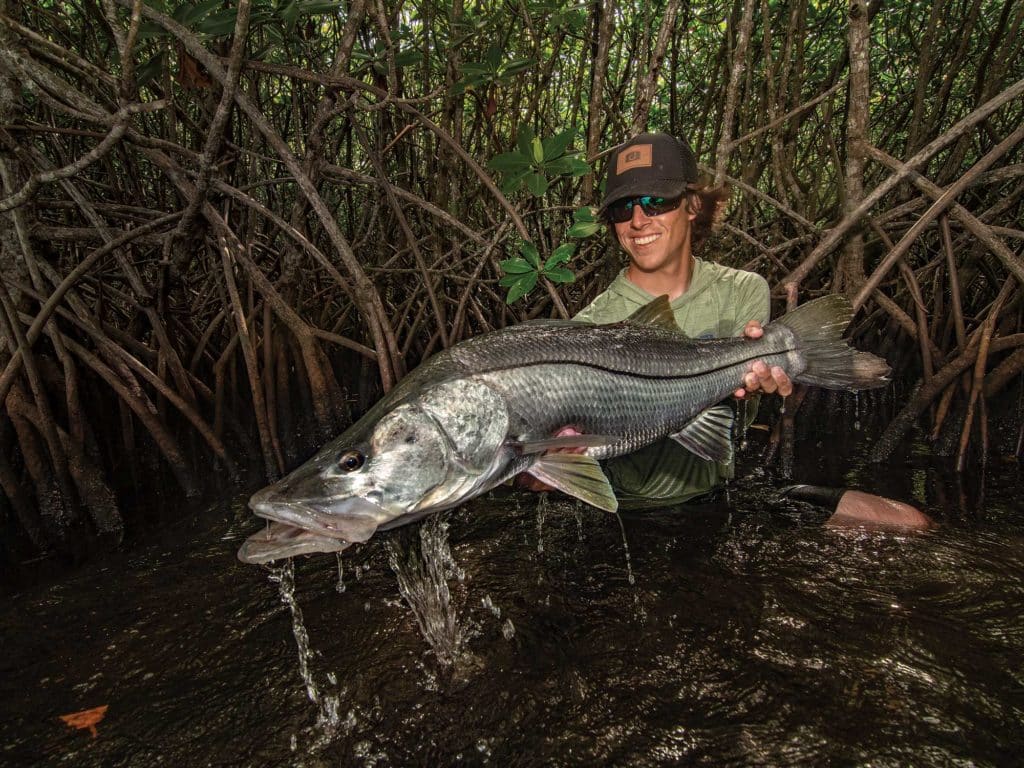
Live shrimp pinned on a jig head and live or cut ladyfish top Lemay’s bait choices, “but everything in the Glades, from 15-inch snook to 100-pound tarpon, will eat a jig, ” he says. Lemay uses bucktails or Gulp! lures rigged on jig heads, starting with a 1/8-ounce and gradually increasing weight based on water depth. Gold and silver spoons are backcountry standards, and topwaters like the Rapala Skitter Walk or MirrOlure Top Dog are effective early, along with floating prop lures.
Everglades Bounty
Though snook and tarpon proved elusive, we enjoyed action with reds, trout, jacks, ladyfish and small goliath grouper, and sight-cast to cruising sharks. Along the way, we also saw manatees and countless bird species, but only a few boats during our three days in the mangrove maze. While the fishing wasn’t on fire, exploring such a unique area with its panoramic sunsets and clear, starry skies above our campfire made it a memorable adventure.
Read Next: Boat Camping Tips
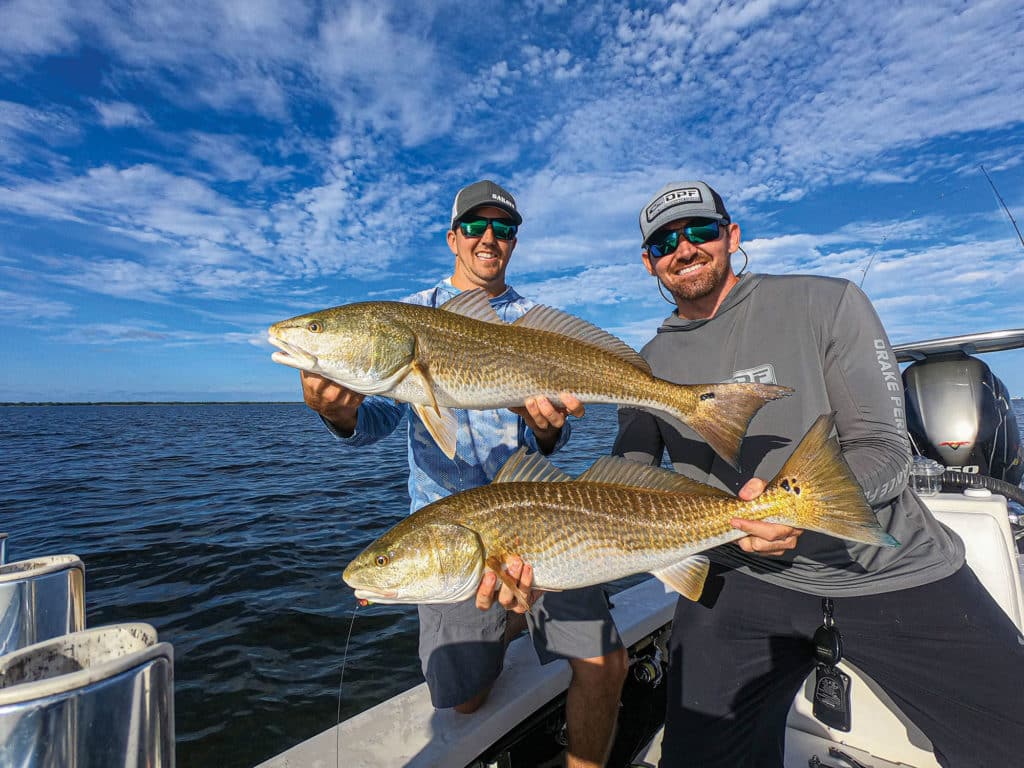
Paperwork
Reservations for backcountry permits are required for chickee, beach and ground camping sites. Fees are currently $11 per night for two campers. A park pass ($30) is also required. Visit recreation.gov/permits/4675314.
Campers must check in to obtain the actual permit and hear the safety briefing one day before or the day the trip begins. Check in at the Flamingo or Gulf Coast Visitor Center (between Everglades City and Chokoloskee). The Wilderness Trip Planner (nps.gov/ever/planyourvisit/wilderness-trip-planner.htm) is an excellent guide and checklist for any Everglades backcountry excursion. Camping permits must be attached to the tent at the campsite.
To help minimize impact to the habitat and wildlife, all boat operators must now take the free online boating course before arrival to the park. Campers must show the certificate when checking in for their camping permits (bring a hard copy). The link is provalenslearning.com/everglades-boater-education-course.
Warnings and Tips
Negative low tides and north winds can be a problem for mooring at beach campsites during winter. Pick a spot on the lee shore and anchor the boat out deep enough to prevent grounding. A bow anchor plus another off the stern on an angled line with a buoy will allow for tidal swings and grant easy access.
A two-cooler system will prolong your ice supply and keep food fresh. Fill one with ice and only open it to replenish the other daily. Preplanned one-pot meals—vacuum-bagged and frozen—will make ice last longer too.
Raccoons inhabit the Glades and are notorious for stealing food and water. Keep all food in coolers or storage containers with bungees securing the lids, and don’t leave anything edible in tents. Rocky will also chew through light plastic jugs to get to fresh water.
Prepare for eventualities and check the extended weather forecast before leaving the dock. Severe storms swept over Tiger Key the evening after we left, bringing high winds, heavy rain and waterspouts. An inexpensive and compact tarpaulin makes a good emergency shelter if your tent gets damaged.
Packing List
Boat Must-Haves
- One to two anchors with chain and ample rode; a line buoy comes in handy for beach anchoring
- Dock lines and fenders for chickee mooring
- Extra fuel
- GPS with detailed charts
- Backup waterproof navigation chart
- Spare batteries for accessories
- VHF radio
- Spotlight
- Personal locator beacon or satellite communication device
- First-aid kit with antiseptic cleanser and pain reliever
- Heavy-duty pliers (with side cutter to remove hooks)
- Foul-weather gear
Camp Essentials
- Tent with rain fly
- Sleeping bags
- Air mattresses
- Emergency tarp
- Light rope, paracord or long cable ties
- Extra clothing in dry bags
- Personal bug nets or Buffs
- Headlamps
- Propane or butane camp stove with extra fuel
- Durable water jugs (1 gallon per person per day recommended)
- One to two large coolers with ice
- Cooking gear (pots, skillet, utensils, plates, bowls, tumblers, flatware)
- Fireplace lighter and backup matches
- Can opener
- Fillet knife and cutting board
- Dish-washing soap and rags
- Paper towels and toilet paper
- Garbage and zip-lock bags
- Lantern
- Folding chairs
- 5-gallon bucket with seat lid or pool noodle, plus garbage bags for camp toilet (if portalet is not available)
- Solar shower
- Compact camp shovel
- Hatchet
- Citronella candles or Thermacell with extra cartridges and butane for bug repellent









